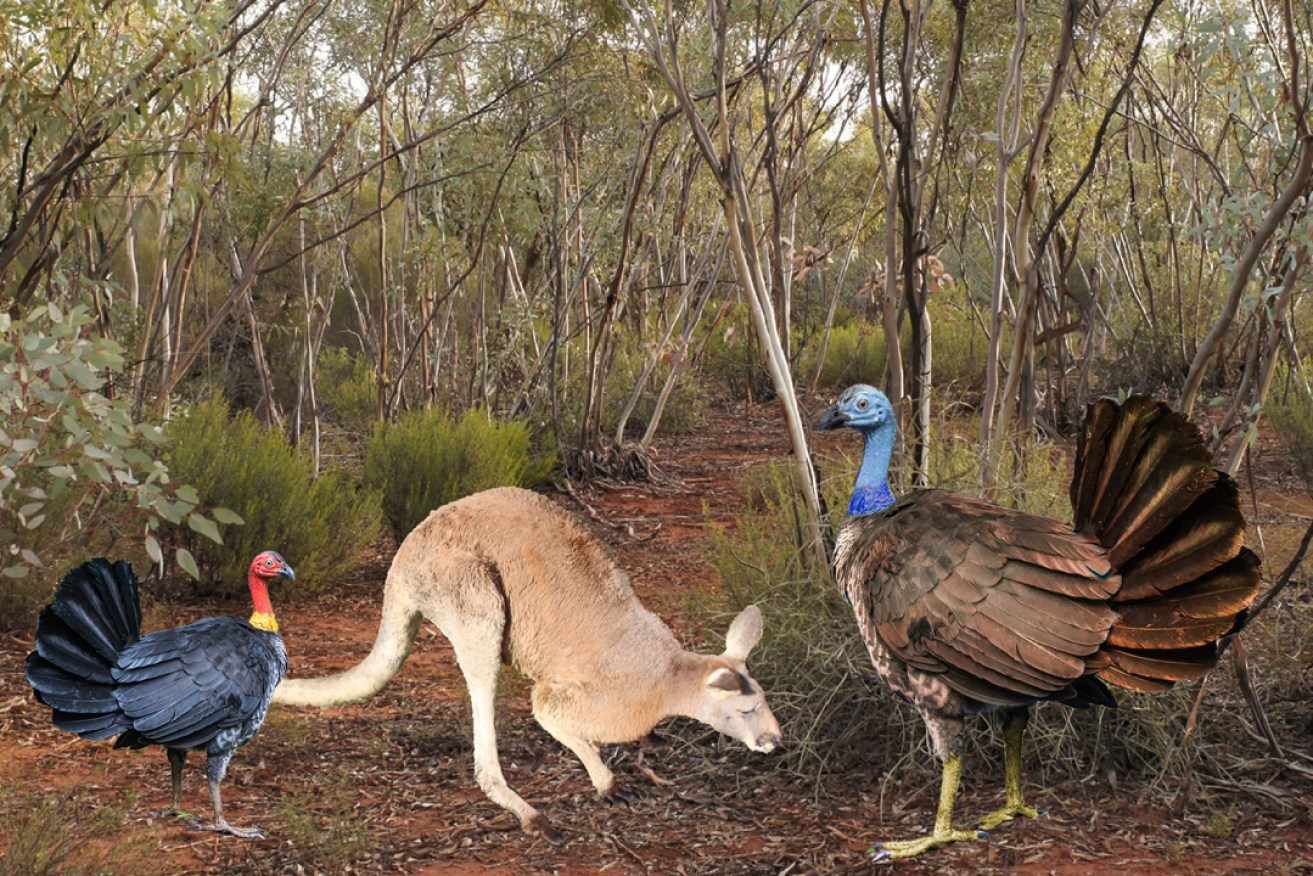Flying turkey was as tall as a kangaroo: researchers
A kangaroo-sized flying turkey that lived in Australia more than 50,000 years ago has been discovered by Flinders University palaentologists.

A reconstruction of the giant flying turkey next to a grey kangaroo. Photo: Flinders University
The giant brush-turkey Progura gallinacea is one of five extinct large megapode birds the researchers identified after studying fossils from Queensland, New South Wales, South Australia and Western Australia.
The birds lived during the Pleistocene era – between 1.6 million and 10,000 years ago – alongside giant extinct marsupials such as diprotodons, marsupial lions and short-faced kangaroos.
They were relatives of today’s Malleefowl and brush turkeys, but were up to four times larger, weighing between 3kg to 8kg. Despite the birds’ size, the researchers said, their long, strong wing bones show they could all fly and probably roosted in trees.
“Given several of the largest birds to have lived in Australia in recent times have escaped detection in the fossil record until now, our research shows how little we know of Australia’s immediate pre-human avifauna,” said Flinders University Associate Professor Trevor Worthy.
“Probably many smaller extinct species also await discovery by palaeontologists.”
It was originally thought that megapode fossils found in Queensland in the 1880s and South Australia’s Naracoorte Caves in the 1970s were both from one species that later dwarfed to become the modern Malleefowl.
However, Flinders PhD candidate and researcher Elen Shute said when those fossils were compared with more recently discovered specimens, differences between species became clear.
“The two species that were originally described are so different that they belong in separate genera. These and three more new species were all more closely related to each other than they are to the living Malleefowl.
“What’s more, we have found bones of Malleefowl in fossil deposits up to a million years old, alongside bones of three extinct species of various sizes, so there’s really no evidence that dwarfing took place.”
As well as the “tall turkeys”, the extinct megapodes include what are described as “nuggetty chickens”, which had short legs and broad bodies.
It is thought the birds probably buried their eggs in warm sand or soil, rather than building mounds like their modern relatives.




